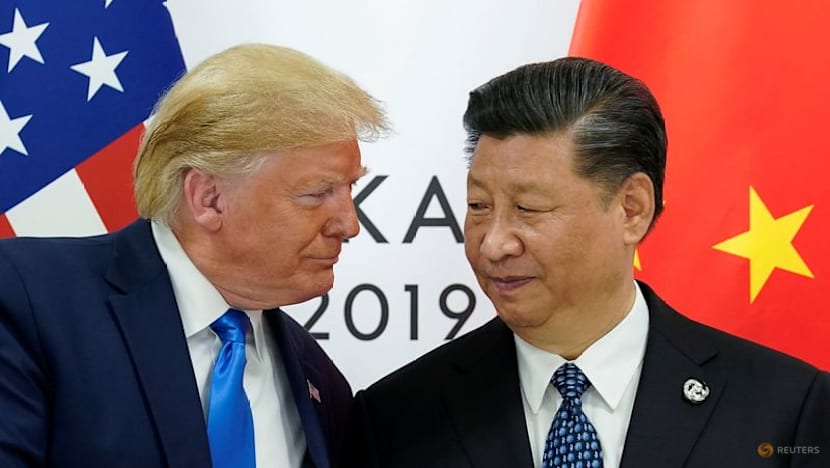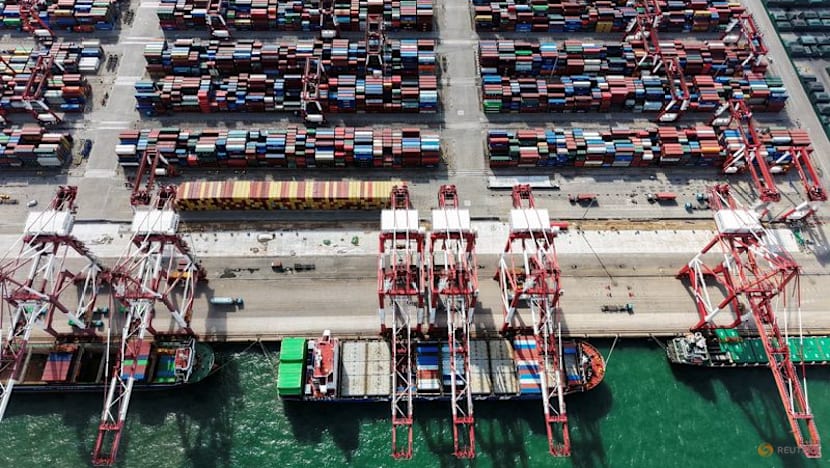China hopeful of ‘solution’ as it prepares for US trade talks; Xi stresses need for strategic resolve
Chinese officials outlined plans to boost innovation and confidence, while President Xi Jinping issued a belated message on the need to stay proactive amid global uncertainty.


This audio is generated by an AI tool.
SHANGHAI: Chinese officials struck an upbeat tone on Friday (Oct 24) over the country's future development based on a five-year roadmap and a medium-term blueprint newly endorsed at a Communist Party conclave this week - and even on resolving trade tensions with the United States ahead of high-level talks.
On the same day, the Xinhua state news agency released a belated dispatch of remarks made by President Xi Jinping in August - about the need for China to remain proactive in shaping change, deepening reform, and reinforcing domestic resilience amid rising global uncertainties.
“We must closely monitor and accurately assess the international situation, actively recognise, adapt to, and seek change, and firmly grasp the strategic initiative,” Xi was quoted as saying at a closed-door session with leaders of other political parties to gather feedback for the new 15th Five-Year Plan.
“No matter how the external environment changes, China must focus on running its own affairs well.”
China’s development had also entered a phase where “strategic opportunities coexist with risks and challenges”, Xi added, while emphasising the importance of accurately assessing the global environment while advancing national priorities.
That includes “fully and faithfully” implementing the country’s new development philosophy, boosting domestic demand, unblocking internal and external circulation, and managing risks more effectively.
Technological self-reliance was also vital for future growth, Xi said, calling for stronger investment in original innovation and basic research, particularly in core technologies.
Efforts should be made to “develop new quality productive forces based on local conditions and accelerate the building of a modern industrial system”, he added.
US President Donald Trump will reportedly meet Xi next week on the sidelines of the Asia-Pacific Economic Cooperation (APEC) leaders summit in South Korea.

Representatives from both sides are also expected to meet in Kuala Lumpur from Oct 24 to 27, on the sidelines of the Association of Southeast Asian Nations (ASEAN) Summit, as part of negotiations aimed at reducing trade tensions between the world’s two largest economies.
Scheduled to attend are Chinese Vice Premier He Lifeng, the country’s top economic policymaker and lead trade negotiator, and US Treasury Secretary Scott Bessent.
Consultations will focus on key issues in the US-China economic relationship and will be held in line with the consensus reached by the two heads of state during their phone conversations earlier this year, according to a statement by a Chinese ministry spokesperson.
“ENTIRELY POSSIBLE TO FIND A SOLUTION”
Speaking to reporters at a briefing in Beijing on Friday, Chinese Commerce Minister Wang Wentao addressed the issue of strained trade ties with the US, reiterating Xi’s earlier remarks that dialogue and cooperation “are the only correct choice” for both countries.
Wang also spoke about China’s opposition to economic decoupling as a “responsible big country”, by “firmly safeguarding the security and stability of the global production and supply chain”.
“The first four rounds of economic and trade consultations have fully proved that … it is entirely possible to find a solution to each other's concerns and find the right way to get along with each other,” he said.
He spoke alongside other officials at Friday’s briefing - addressing the outcomes of the party’s fourth plenum this week and also outlining the leadership’s key messages on development priorities, policy continuity, and efforts to boost market confidence.
The 15th Five-Year Plan, which will cover the period from 2026 to 2030, is currently under preparation and is expected to serve as a key policy roadmap for China’s economic and social development in the next phase.
It is closely tied to a longer-term vision known as the 2035 development blueprint - a strategic goal set by the Party to “basically achieve socialist modernisation” over the next decade.
“In the next step, whether we open up or attract investment, we will not engage in the zero-sum game of benefiting ourselves at the expense of others,” Wang said.
“It is about mutual benefit and common development.”
Looking ahead, China would also leverage its large domestic market, including a growing middle-income population, to drive consumption and innovation, he added.
Wang pointed to further liberalisation in sectors such as telecommunications, biotechnology, and wholly foreign-owned hospitals, and said pilot programmes would be expanded in services and education.
He cited how more than 240,000 foreign enterprises had been established during the current Five-Year Plan period, with actual use of foreign capital exceeding US$720 billion (5.1 trillion yuan).
He also highlighted the rise of high-tech sectors like automobiles, healthcare and electronic information as key recipients of foreign investment, with multinationals and foreign companies expanding both R&D operations and regional headquarters across China.
“Many multinational companies tell us that investing in China is not an option, but a necessary option,” Wang said.

SIGHTS SET ON REAL ECONOMY, AI-LED INNOVATION
On Friday, senior Chinese officials outlined priorities for the coming years, emphasising a return to industrial fundamentals, and the expansion of emerging technologies like AI, artificial as key growth engines.
Zheng Shanjie, head of China’s National Development and Reform Commission, underscored the importance of the “real economy” - the production of tangible goods - as the foundation of the country’s long-term development.
“China’s economy was built on the real economy, and its future also depends on it,” Zheng said. “It has been suggested that building a modern industrial system and strengthening the foundation of the real economy be placed as the top strategic task.”
China will also prioritise the development of strategic emerging industries, including quantum technology and biomanufacturing, identifying them as potential new growth drivers, Zheng added.
These sectors could carry a market potential of 10 trillion yuan (US$1.4 trillion), Zheng said.
Commerce minister Wang noted that economic performance would continue to be measured not only by headline growth but also by broader well-being indicators.
“We look not only at GDP, but also at GNI (gross national income) - we value not only the Chinese economy but also the economy of the Chinese people,” Wang said.
He also said that China would work to fully leverage the advantages of its vast domestic market, pointing to the country’s population of more than 1.4 billion and a middle-income group projected to exceed 800 million in the coming decade.
“We will vigorously boost consumption, create a ‘buy in China’ brand, and make the consumption of goods and services thrive,” Wang said.
“Let China’s big market become the testing ground, application field, and profit field of global innovation.”
Also speaking during Friday’s conference was Yin Hejun, China’s minister for Science and Technology, who said innovation would play a central role in shaping what policymakers have been calling “new-quality productive forces” - a broad term for future-oriented sectors expected to drive the next phase of growth.
The country will accelerate innovation-driven development, strengthen the alignment between technology and industrial needs, and deepen reforms across the science and technology ecosystem to drive high-quality growth, Yin said.
“Scientific and technological innovation can give birth to new industries, new models and new momentum,” Yin said.
He outlined four key priorities for advancing innovation: boosting high-quality scientific output; strengthening the integration of innovation and industry; deepening systemic reforms in the tech sector; and tailoring innovation strategies to local strengths.
“It is the core element of developing new-quality productive forces,” he said.























